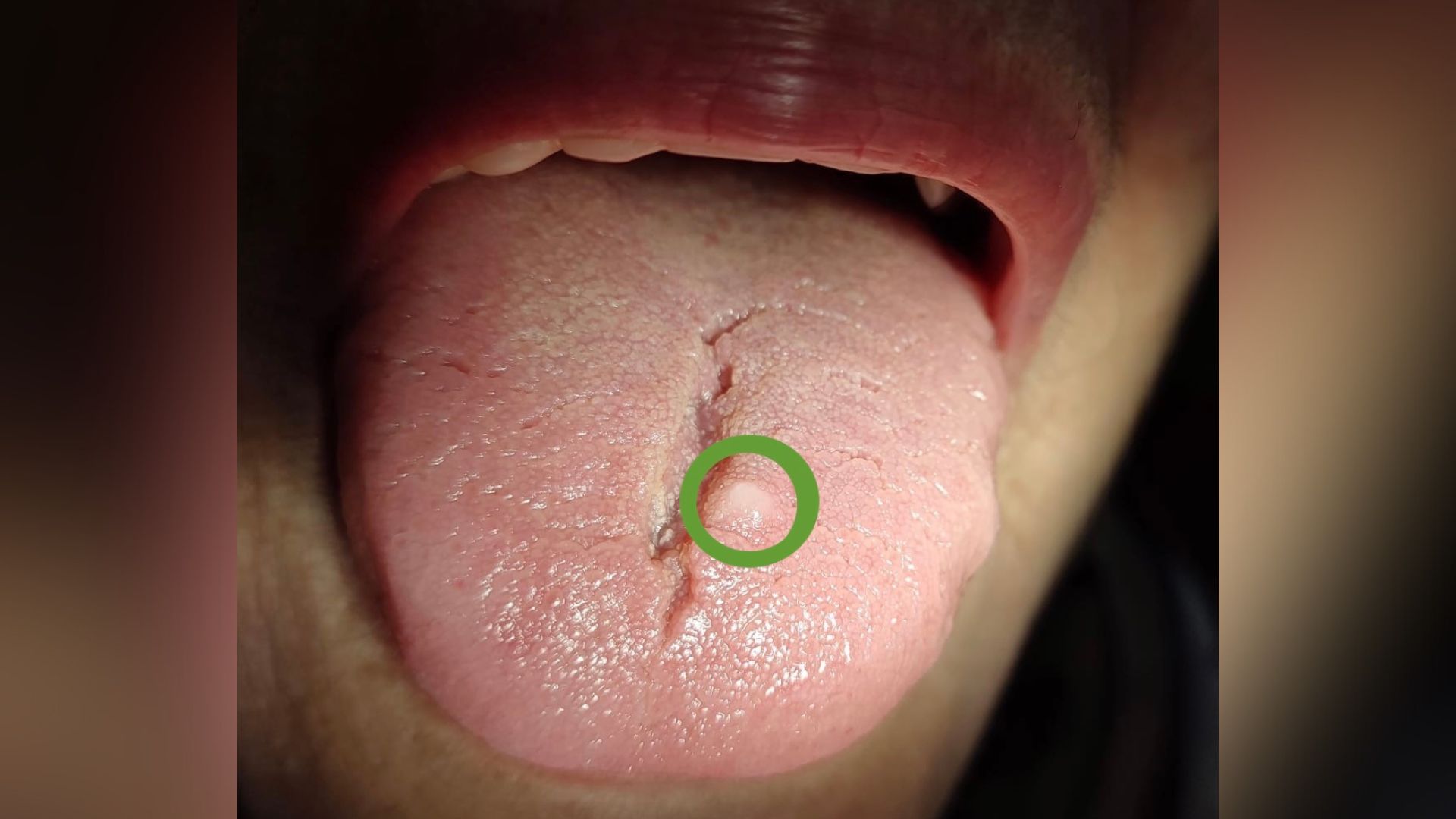Rare bubble of goo that grew on a woman's tongue had no clear cause
A weird lump on a woman's tongue was attributed to a rare condition of unknown cause.

A strange lump that ballooned on a woman's tongue over the course of six months is something of a medical mystery; it formed due to a rare buildup of goo that sometimes occurs in the mouth, but has no clear cause, her doctors reported.
In a new report of the odd case, published online in July in The American Journal of Dermatopathology, the woman's doctors said that the lump was caused by oral focal mucinosis, or OFM, a rare connective tissue disorder that normally causes a mass to form on the gums or hard palate. If OFM is rare overall, "OFM of the tongue is even more unusual," they wrote.
In parts of the mouth affected by the disorder, normal connective tissue breaks down and is replaced by gelatinous, mucus-like goop. That goop is hyaluronic acid, a slippery substance naturally produced by connective tissues that gets overproduced in OFM. The excessive production of hyaluronic acid leads to a buildup that causes a lump to form.
In the newly reported case, a 72-year-old woman in Mexico went to the doctor after such a lump had lingered on the top of her tongue for half a year. She reported that the lump caused her discomfort and pain while speaking and swallowing. The woman's doctors could easily see the small white lump, which they measured to be about 0.8 by 0.8 inches (2 by 2 millimeters) in size.
Related: Man sprouted thick, green 'fur' on his tongue in odd medical case
The typical treatment for OFM involves surgery to remove the lump and then monitoring, to check that it hasn't come back. That said, recurrence rates are low, the case report notes, and thankfully the condition is benign with no potential to cause cancer. In the woman's case, her doctors successfully removed the tongue lump under local anesthetic and it didn't come back after 10 months of monitoring.
So what causes such bubbles of goo to swell in the mouth? Scientists aren't really sure.
Get the world’s most fascinating discoveries delivered straight to your inbox.
According to the case report, OFM was first described in medical literature in 1974, and since then, about 100 cases have been formally documented. Of these, only seven have been described as affecting the tongue, as opposed to the gums or hard palate.
Some scientists have theorized that the tissue starts pumping out hyaluronic acid in response to some "insult," like physical trauma. This idea is supported by the fact that the production of mucins — the group of jelly-like, complex carbohydrates that includes hyaluronic acid — can be triggered by inflammatory molecules called cytokines, which get released after tissue injury. In addition, mucins have anti-inflammatory properties, so in theory, they may help tissues repair themselves after injury by tamping down the related inflammation.
In the recent case, "there were no specific triggers recalled by the patient," said Dr. Rosa E. Gómez-Torres, a co-author of the case report and a dental surgeon at the Research Institute in Dentistry at the University of Guadalajara in Mexico. "However, the nature of the lesion suggests a possible relationship with trauma," Gómez-Torres told Live Science in an email.
However, the idea that OFM may be a result of trauma to the gums, hard palate or tongue is "still controversial," the case report authors wrote. "Furthermore, despite numerous studies, there has been no significant progress in understanding" how OFM develops, they wrote. Nonetheless, "the suggestive active role of mucin in inflammatory signaling is very intriguing."
Editor's note: This story was updated on July 25, 2023 to include quotes from Dr. Rosa E. Gómez-Torres. The story was first published on July 24.

Nicoletta Lanese is the health channel editor at Live Science and was previously a news editor and staff writer at the site. She holds a graduate certificate in science communication from UC Santa Cruz and degrees in neuroscience and dance from the University of Florida. Her work has appeared in The Scientist, Science News, the Mercury News, Mongabay and Stanford Medicine Magazine, among other outlets. Based in NYC, she also remains heavily involved in dance and performs in local choreographers' work.


